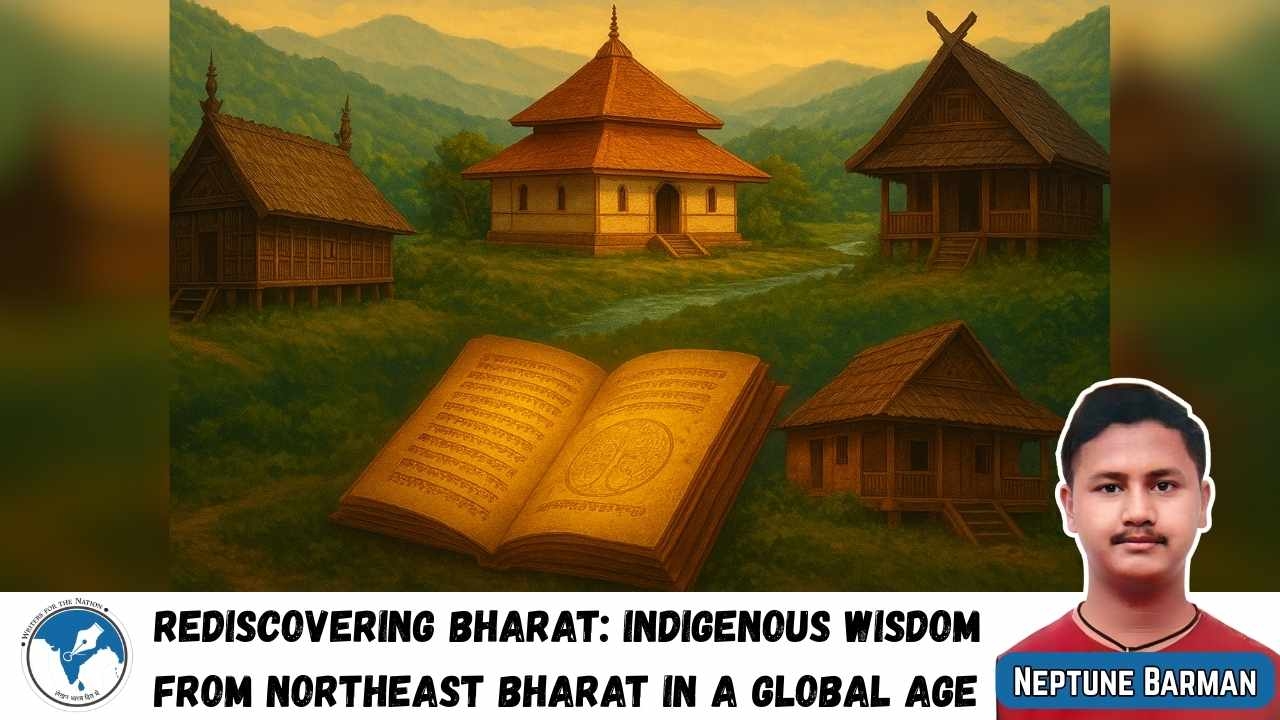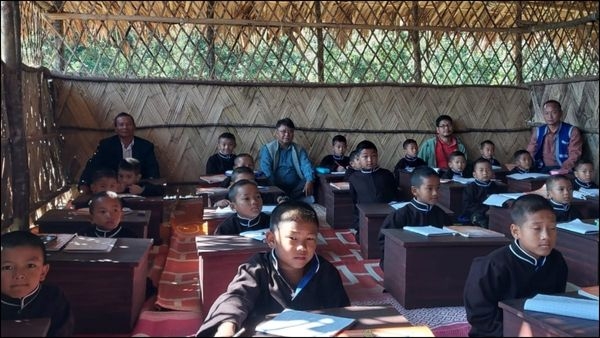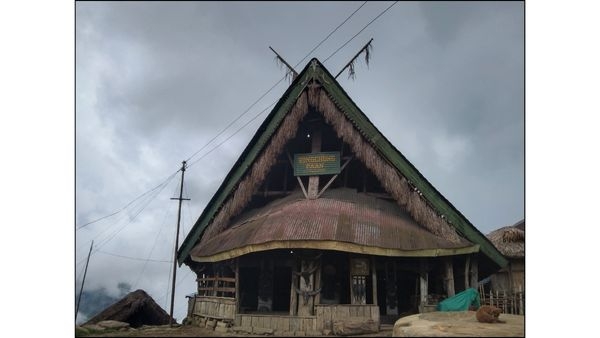Rediscovering Bharat: Indigenous Wisdom from Northeast Bharat in a Global Age
From Gurukuls in Arunachal to Namghars in Assam, Northeast Bharat shows how indigenous wisdom can guide global sustainability and holistic learning.
Total Views |

In an era when the world faces rising environmental crises, fractured identities, and educational disillusionment, Bharat holds keys forged over millennia. Modern references to India often limit the concept of Rashtra to a political entity called a nation, obscuring the civilisational ethos of Bharat. The Indian Knowledge System, deeply embedded in community practices, rituals, and oral traditions, transcends political and geographical boundaries. Nowhere is this more visible than in Northeast India, which serves as both a cultural frontier and a civilisational bridge to Southeast Asia.
The Bharatiya Knowledge System was never meant to be institutionalised in modern academic silos. It evolved organically from society itself through community dormitories, storytelling, martial training, spiritual exercises, and practical life skills. The world speaks of sustainability, holistic learning, and community health. But in the highlands and forests of the Northeast, such ideals are not policy slogans — they are culture.
From the Upanishads and Ayurveda to the Janajatiya ecological ethics of the Northeast, the Indian Knowledge System includes wisdom that prioritises sustainability, ethical living (dharma), and a harmonious relationship with nature and society. Despite its geographical distance, the Northeast is not a fringe to Indian culture but a core bearer of Bharatiya traditions, reflected through unique yet deeply Indic frameworks. The region houses several Janajatiya communities across seven states. It is no coincidence that ancient scholars or Rishis often travelled to the hills and forests for meditation and knowledge.
Gurukuls in Arunachal Pradesh

In Arunachal Pradesh’s villages, a remarkable development is underway. Gurukuls here have blended ancient Vedic learning with the cultural teachings of Janajatiya communities. Students recite Sanskrit shlokas while practising indigenous farming and martial arts. It is not just a school — it is a renaissance of rooted education, balancing STEM with spirituality, algorithms with Ayurveda.
The Zawlbuk of Mizoram
Imagine a dormitory where boys are trained not only in discipline and skills but also in ethics, storytelling, and selfless service. This was the Zawlbuk — a traditional institution in Mizo society where young men learnt through wrestling, folk songs, and oral narratives. Central to this was the Mizo concept of tlawmngaihna — a code of service, dignity, and community action. Long before leadership classes became fashionable, the Zawlbuk was shaping responsible men of purpose.
The Morung of Nagaland

In Nagaland, the Morung served as the University of the Village. Elevated on hill slopes, it functioned both as a lookout post and a learning centre. Boys were taught social customs, military skills, and spiritual practices. Much like Plato’s academy, the Morung was about producing wise citizens, not just efficient workers.
The Namghar of Assam

The Namghar remains a vibrant institution in Assamese culture. Originating from the Bhakti movement led by Srimanta Sankardeva, Namghars continue to be places of dispute resolution, art performances, and collective prayer. They reflect the Indic ideal of decentralisation, where governance, faith, and learning merge at the grassroots.
Civilisational Parallels and Global Relevance
The knowledge systems of Northeast India do not operate in isolation. They share civilisational threads with Southeast Asia, indicating a Bharatiya cultural continuum that transcends political borders and challenges colonial cartographies of “India.” The Indian Knowledge System, as preserved in Northeast India, offers a civilisational response to modernity’s crises. These are not relics but living laboratories of holistic education, governance, and sustainability.
The book Mathematics and Mizo Culture (Chaurasia & Lalramnghaka) illustrates how indigenous numeracy and spatial reasoning can enrich modern curricula. This ethnomathematical approach mirrors ancient Bharatiya traditions of logic (nyaya and tarka), making it globally relevant in building decolonised and context-aware learning environments.

Smt. Yanung Jamoh Lego, a Padma Shri awardee from Arunachal Pradesh, exemplifies the synergy between Ayurvedic principles and tribal medicine. Her work spans over 300,000 treatments using herbal knowledge preserved through oral traditions — a living embodiment of the Ayurveda-Yoga continuum.
Living Traditions and Ecological Wisdom
Among Janajatiya communities of the Northeast, sacred rituals ensure seed germination, while ceremonies are performed to appeal to the sky during incessant rains. These are not superstitions but community-driven meteorology, woven with meaning and belief.
In a fractured, fast-paced digital world, the Northeast shows us how to remain human. Its Indigenous Knowledge Systems remind us that education can be holistic, agriculture ecological, and medicine sacred. These are not merely tribal practices but Bharatiya solutions to global challenges.
The time has come not just to revisit textbooks but to walk into the forests, fields, and festivals of Northeast India and listen to the heartbeat of Bharat.
Article by

Neptune Barman
The author is pursuing an MA in English at Sathyabama Institute of Science and Technology.

